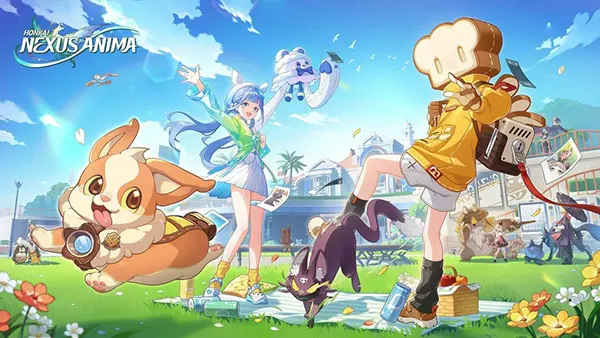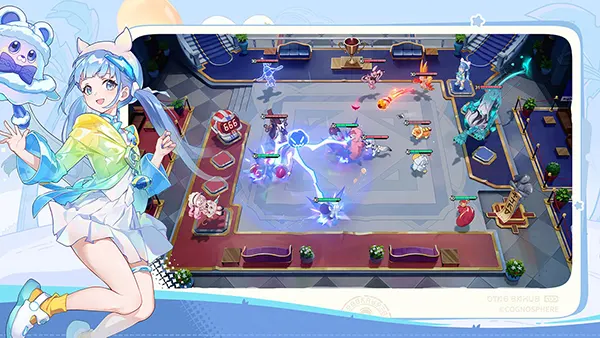
Review of Gameplay Mechanics in Honkai: Nexus Anima
Honkai: Nexus Anima, released by HoYoverse in 2025, represents the next step in the studio’s evolution of action RPGs. The game combines strategic depth, dynamic combat and storytelling into a cohesive experience. Understanding the gameplay mechanics is essential to appreciating how Nexus Anima stands apart within the Honkai franchise and among modern mobile titles.
Core Combat System
The combat system in Nexus Anima builds upon fast-paced action familiar to Honkai players, but introduces layered mechanics that expand tactical options. Players manage a squad of three characters, switching between them in real time to trigger chain skills and maximise damage output. Timing and resource allocation are critical, with stamina and cooldown systems forcing meaningful decisions in battle.
A central innovation is the Anima Resonance mechanic. This allows characters to synchronise abilities, producing enhanced effects when executed at the right moment. Proper use of Resonance can shift the outcome of difficult encounters, adding both challenge and reward for skilled players. The system also fosters experimentation with different team compositions.
Enemy design has been elevated with advanced AI routines. Opponents adapt to player behaviour, requiring a mix of defensive manoeuvres and offensive bursts. The introduction of break gauges and elemental counters ensures that combat remains varied, preventing repetitive encounters while rewarding mastery of mechanics.
Character Progression in Battle
During fights, characters accumulate Focus, a temporary resource that powers special abilities. The system encourages aggressive play but penalises reckless actions, as overextension leaves characters vulnerable. Focus-based mechanics add another layer of resource management beyond health and stamina.
Skill trees provide customisation for each hero. Players can unlock branching upgrades that alter attack properties, defensive skills or support abilities. This level of flexibility makes each build unique, ensuring that even within the same character roster, playstyles feel distinct.
The interplay of skill upgrades and Focus management makes progression not just about levelling numbers, but about shaping the rhythm of combat itself. This design gives long-term depth to both casual and competitive players.
Exploration and World Interaction
Beyond battles, Nexus Anima introduces semi-open zones where players can interact with environments and uncover lore fragments. Exploration is encouraged through hidden paths, interactive objects and dynamic events that change based on player actions. These zones are not vast open worlds, but intricately designed arenas blending combat and discovery.
Environmental puzzles demand attention and creativity. Some require elemental manipulation, while others depend on character-specific abilities. By linking exploration to character mechanics, the game creates meaningful incentives to rotate teams and experiment outside combat.
Collectible Anima Shards scattered across maps enhance immersion. These items contribute to both story progression and character development, rewarding thorough exploration without feeling like simple fetch tasks. This strengthens the connection between world-building and gameplay systems.
Integration of Narrative and Mechanics
The narrative is tightly woven into exploration activities. Players encounter story-driven challenges, where choices influence subsequent missions or dialogues. This integration makes exploration more than a passive exercise; it becomes part of the storytelling framework.
Dynamic events are often tied to narrative arcs, meaning that returning to areas at different points in the story reveals new interactions. This design adds replayability and depth, encouraging players to revisit familiar zones with fresh perspectives.
The balance between combat intensity and narrative immersion demonstrates HoYoverse’s focus on delivering both action and meaning. It ensures that world interaction feels consequential, rather than a filler between battles.

Multiplayer and Cooperative Systems
Multiplayer content has evolved significantly in Nexus Anima. The game supports cooperative missions where up to four players can join forces. These missions often feature bosses with mechanics that demand coordination, making communication and synergy vital for success.
Guild systems expand on social interaction, allowing groups of players to collaborate on large-scale objectives. Weekly guild raids and seasonal competitions provide structured challenges, rewarding both teamwork and strategy. These features reinforce the game’s longevity by building a community around shared progress.
Cross-platform integration between mobile and PC enhances accessibility. Players can seamlessly transition between devices, ensuring that progress is not tied to one medium. This reflects a broader industry trend and highlights HoYoverse’s commitment to convenience without sacrificing complexity.
Strategic Depth in Cooperative Play
Cooperative battles require players to specialise roles. Damage dealers, tanks and support characters all have clear functions, and success depends on balanced team compositions. This system rewards preparation and coordination over raw power alone.
Boss encounters often feature multi-phase battles where strategy must adapt mid-fight. For example, shields might demand elemental counters before players can damage health bars directly. These mechanics mirror MMO design but are streamlined for mobile accessibility.
Seasonal updates introduce rotating challenges, ensuring cooperative play stays dynamic. This keeps the multiplayer experience fresh, with players adjusting strategies regularly to meet new demands. As a result, cooperative content remains as engaging as solo campaigns.
